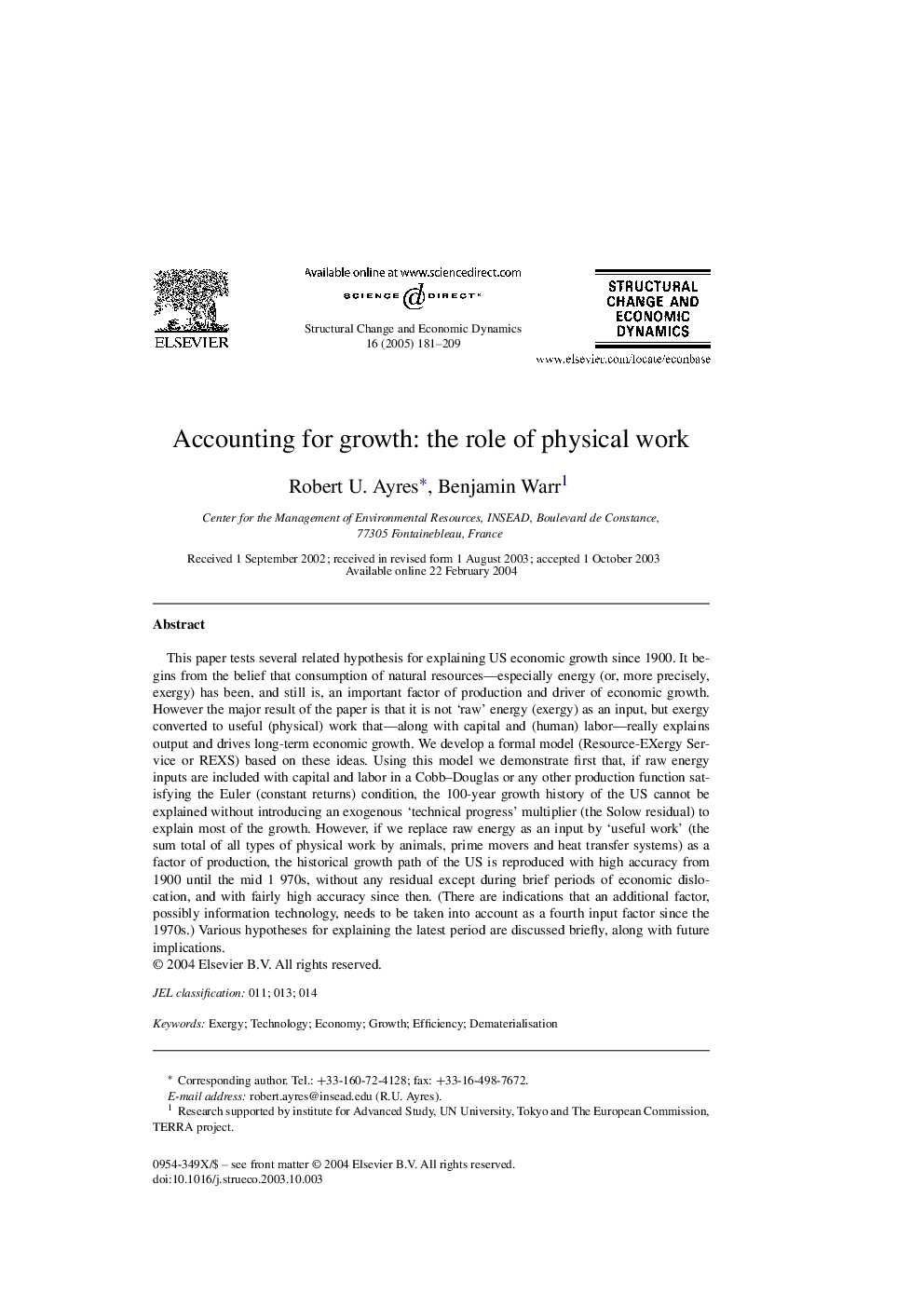| کد مقاله | کد نشریه | سال انتشار | مقاله انگلیسی | نسخه تمام متن |
|---|---|---|---|---|
| 10484572 | 935269 | 2005 | 29 صفحه PDF | دانلود رایگان |
عنوان انگلیسی مقاله ISI
Accounting for growth: the role of physical work
دانلود مقاله + سفارش ترجمه
دانلود مقاله ISI انگلیسی
رایگان برای ایرانیان
کلمات کلیدی
موضوعات مرتبط
علوم انسانی و اجتماعی
اقتصاد، اقتصادسنجی و امور مالی
اقتصاد و اقتصادسنجی
پیش نمایش صفحه اول مقاله

چکیده انگلیسی
This paper tests several related hypothesis for explaining US economic growth since 1900. It begins from the belief that consumption of natural resources-especially energy (or, more precisely, exergy) has been, and still is, an important factor of production and driver of economic growth. However the major result of the paper is that it is not 'raw' energy (exergy) as an input, but exergy converted to useful (physical) work that-along with capital and (human) labor-really explains output and drives long-term economic growth. We develop a formal model (Resource-EXergy Service or REXS) based on these ideas. Using this model we demonstrate first that, if raw energy inputs are included with capital and labor in a Cobb-Douglas or any other production function satisfying the Euler (constant returns) condition, the 100-year growth history of the US cannot be explained without introducing an exogenous 'technical progress' multiplier (the Solow residual) to explain most of the growth. However, if we replace raw energy as an input by 'useful work' (the sum total of all types of physical work by animals, prime movers and heat transfer systems) as a factor of production, the historical growth path of the US is reproduced with high accuracy from 1900 until the mid 1 970s, without any residual except during brief periods of economic dislocation, and with fairly high accuracy since then. (There are indications that an additional factor, possibly information technology, needs to be taken into account as a fourth input factor since the 1970s.) Various hypotheses for explaining the latest period are discussed briefly, along with future implications.
ناشر
Database: Elsevier - ScienceDirect (ساینس دایرکت)
Journal: Structural Change and Economic Dynamics - Volume 16, Issue 2, June 2005, Pages 181-209
Journal: Structural Change and Economic Dynamics - Volume 16, Issue 2, June 2005, Pages 181-209
نویسندگان
Robert U. Ayres, Benjamin Warr,